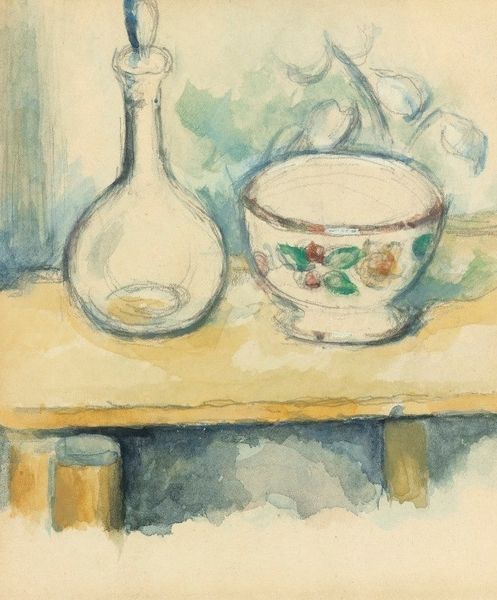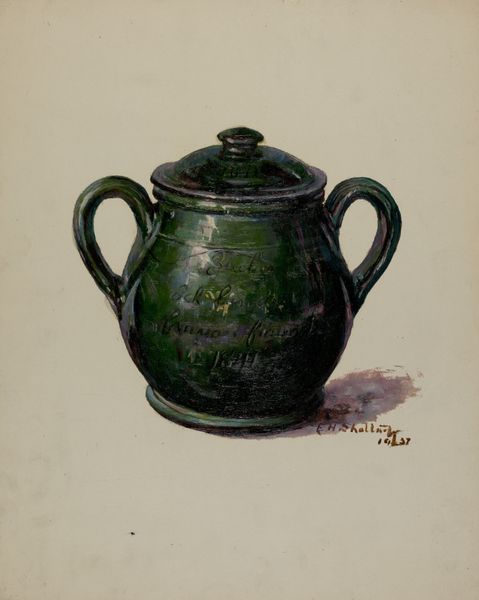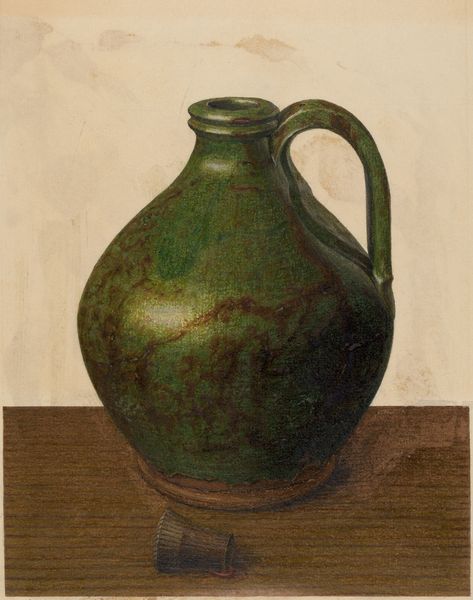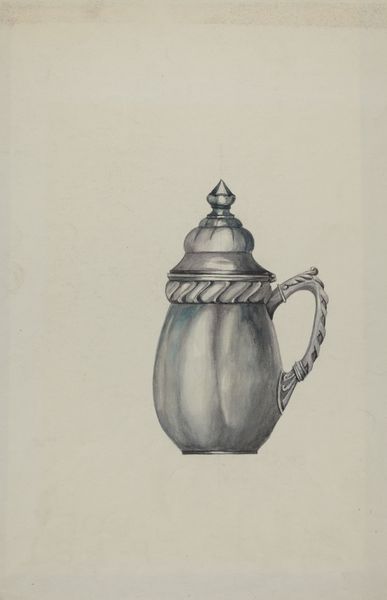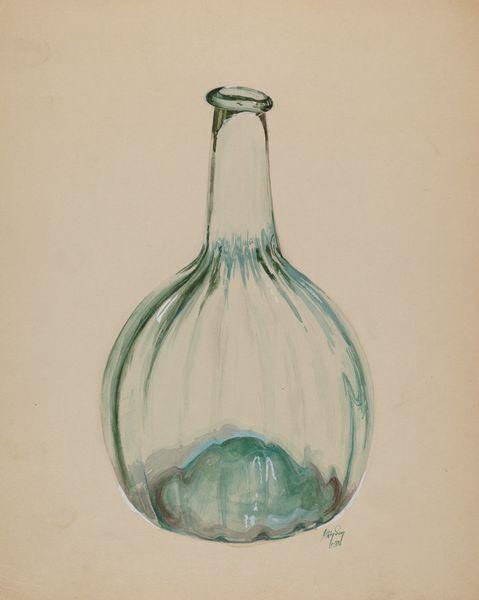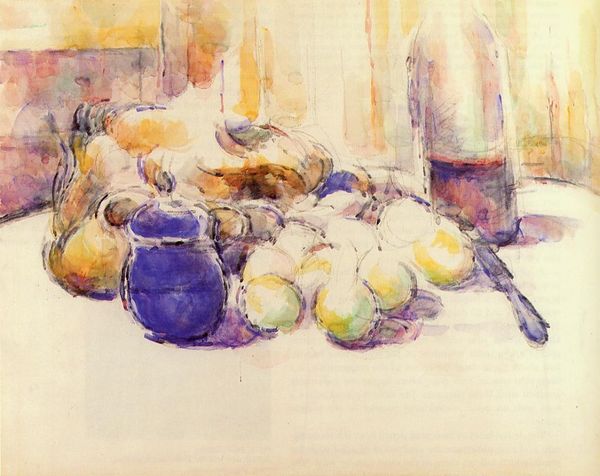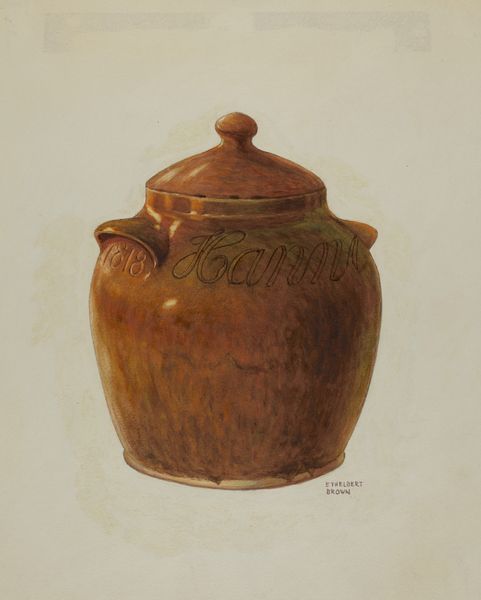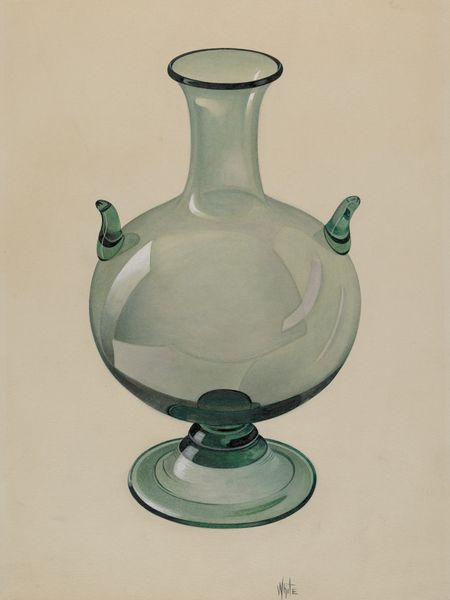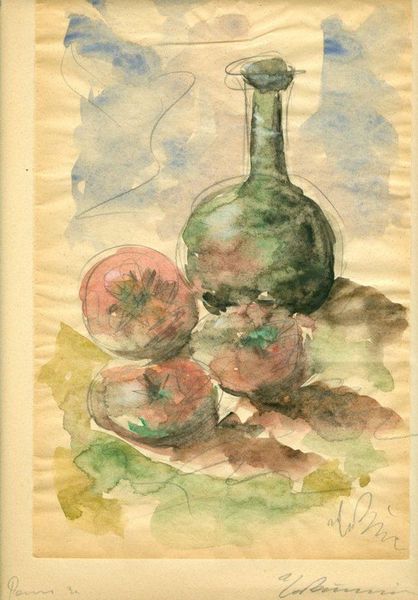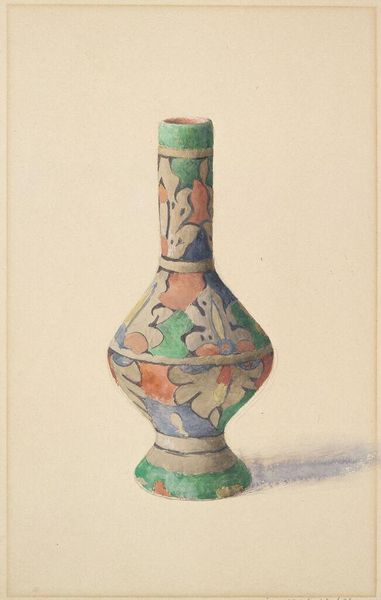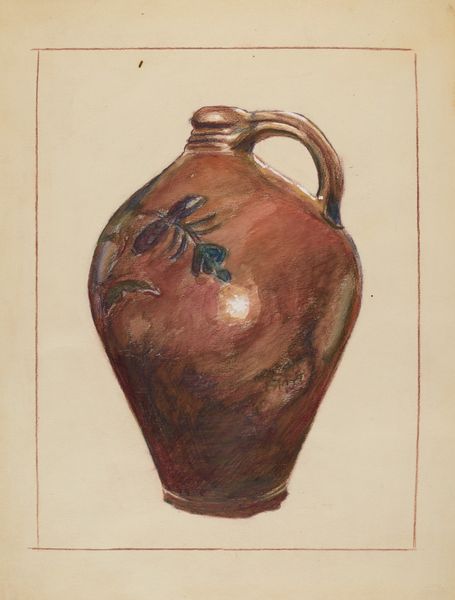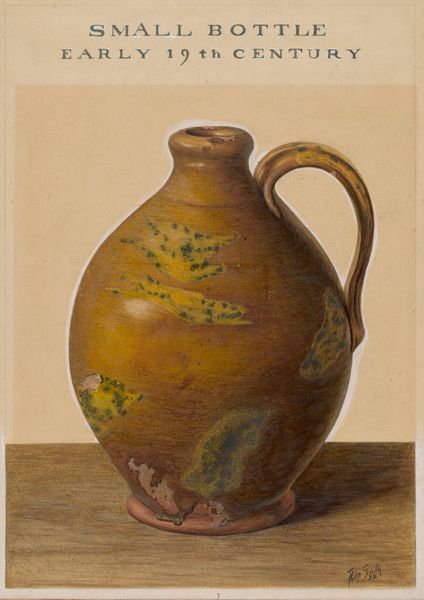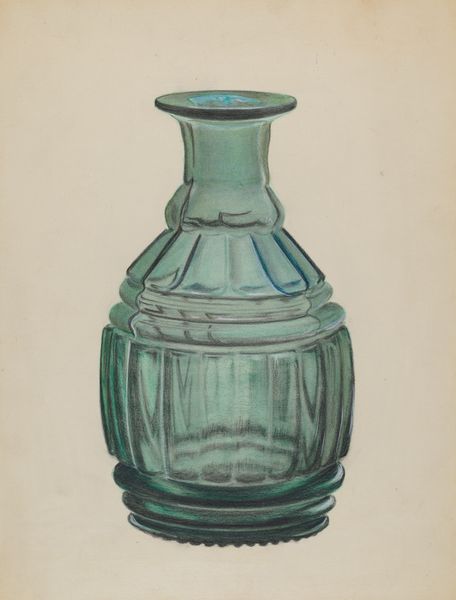
watercolor
#
impressionism
#
oil painting
#
watercolor
#
geometric
#
post-impressionism
#
watercolor
Copyright: Public domain
Curator: Up next, we have Paul Cézanne's "The Green Pitcher," painted around 1887. The artwork, a watercolor on paper, is currently held in the Musée d'Orsay. Editor: I'm immediately struck by how deliberately simple it feels. The loose, almost gestural watercolor application, the pared-down composition – it's almost…humble, considering Cézanne’s stature. Curator: Interesting. I see it as a methodical examination of form. Look at the visible brushstrokes, the layering of color, how he builds the volume of the pitcher, all emphasizing the physical act of painting and the materiality of the pigments themselves. It’s less about depicting a perfect pitcher and more about exploring the means of representing it. Editor: Right, the making-of is what I think resonates. I'm considering the time of its production, around the late 19th century; watercolor at this period, particularly when deployed in such a seemingly casual, sketch-like manner, pushes against the traditionally valued, highly finished academic painting so praised in official institutions and art markets. What does it say, do you think, about its initial audiences when something like this gets publicly recognized? Curator: Good point. The "unfinished" aesthetic does challenge traditional art hierarchies. The loose watercolor suggests immediacy and a privileging of the artist's labor and engagement with the materials. Furthermore, this wasn't produced for the wealthy. The image presents a rather accessible and familiar object—suggesting that artistry is not exclusively attached to items of luxury, and rather that a green pitcher purchased at market is appropriate subject material for study and representation. Editor: I'd argue, also, this resonates so profoundly because of the shift toward an appreciation for the mundane. The rising middle classes sought to reflect and assert their daily experiences; hence the imagery is not of deities and wars but of tables, fruit, pitchers. But still, a pitcher becomes less quotidian as it goes to the museum! We transform work through institutional legitimization, so we would not be mistaken to consider how presentation and place recontextualize it! Curator: Exactly! A fascinating glimpse into Cézanne's practice and the evolution of artistic appreciation and social structures surrounding artwork. Editor: A pitcher still life. Thank you, this has helped me rethink Cézanne, this medium and its history within the walls of museums, institutions and collections.
Comments
No comments
Be the first to comment and join the conversation on the ultimate creative platform.

